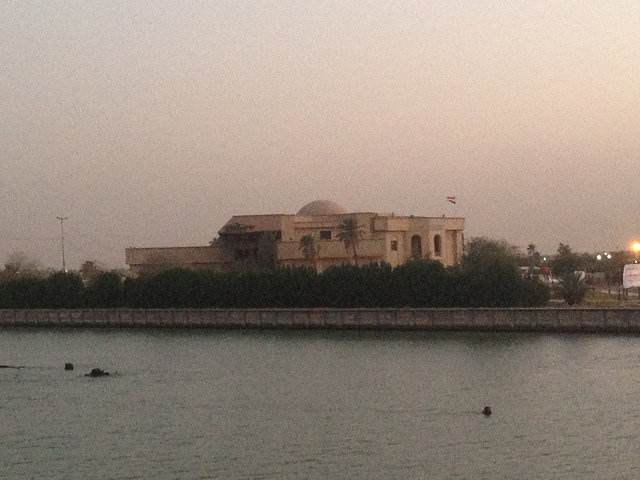Basrah Museum officially opened its doors to the public for the first time on 27 September, in a ceremony attended by thousands from all over Iraq and the world.
For museum director Qahtan Al Abeed, the day represented the culmination of nearly a decade of planning, fund-raising, and persistent optimism and ingenuity. Since 2008 he has worked with the Iraqi State Board of Antiquities and Heritage, the British Army and the British Museum, and latterly the British charities Friends of Basrah Museum and The British Institute for the Study of Iraq, to turn one of Saddam’s crumbling former palaces into a state of the art display space for Iraqi antiquities.
As yet, only one of the museum’s three galleries is open to the public. The majestic hall, painted a deep chocolate brown with a ceiling decorated in classical Islamic style, showcases artefacts from Basrah and its immediate environs. The oldest objects include pottery and coins from the late first millennium BC, when Alexander the Great founded a port city on the nearby Tigris, linking the marshes to the Gulf and India.
The Basrah Museum opened on 27 September 2016. Photo: Qahtan Al Abeed

Basrah itself was one of the first cities in Iraq to be settled by the Muslim conquerors, in the 630s AD. Objects on display from early Islamic Basrah include elegant stone inscriptions and stucco decorations from the mosque and governor’s palace. The Ottoman period, a time of great trading wealth, is also well represented through luxury items such as perfume bottles and incense jars.
The new museum project began during the British occupation of Basrah after the 2003 war. The old museum, a once-elegant Ottoman villa in the heart of the old city, was no longer fit for purpose. (It has since been refurbished as the local antiquities services’ offices.) As part of its withdrawal plan, the British Army agreed to hand over one of the buildings it was then occupying, a three-halled reception pavilion built for Saddam on the waterfront of the Shatt al-Arab. That decision created the opportunity to thoroughly rethink the content, aims and ethos of the museum.
View of the Basrah Museum from the Shatt al-Arab.

Iraq’s provincial museums have traditionally all told the same national story, displaying a similar range of artefacts to that in the Iraq Museum in Baghdad. Basrah Museum is the first to present a local history, of Basrah and its precursors in relation to the marshes and the Gulf. But, for people who cannot travel to Baghdad, says Al Abeed, its second great hall will also present the great cultures of Iraqi antiquity – Sumer, Babylonia, Assyria – that dominated the wider region in the fourth to first millennia BC.
He also hopes that the third, smaller gallery will attract temporary exhibitions from other world cultures, such as ancient Egypt or Rome. This too would be a first for Iraqi museums, which do not hold collections from beyond the national borders.
These ideas have been enabled by a new model of museum management for Iraq and the region. The British charity Friends of Basrah Museum serves as the museum’s board of patrons, raising private sponsorship for museum cases, high-quality security systems, and climate control. The museum also has a group of 40 volunteers at its service, eager to learn more about history and archaeology and to serve the local community.
Qahtan Al Abeed with Maysoon Al-Damluji, chairwoman of the Iraq National Parliament’s Committee on Media and Culture, who formally opened the museum. Photo: courtesy Qahtan Al Abeed

Basrah Museum received 60 visitors the day after its opening, and 200 the day after that. But Al Abeed’s work is far from over. Labels need to be written, guides trained, a website created. The remaining galleries need to be filled. He wants to open a cafe, a bookshop, to find sustainable ways to attract, entertain and educate local school groups and families.
The local politics are complex too. Al Abeed has continued support from Iraqi parliamentarians, local politicians and the museum’s British partners. But the city is still struggling to recover from decades of warfare that began with the Iran-Iraq war of the 1980s, and is now dealing with endemic drug culture, violence and extreme poverty. As a potential resource for visitors and tourists, as well as for residents, Basrah Museum offers a positive vision of the future as well as the past.


